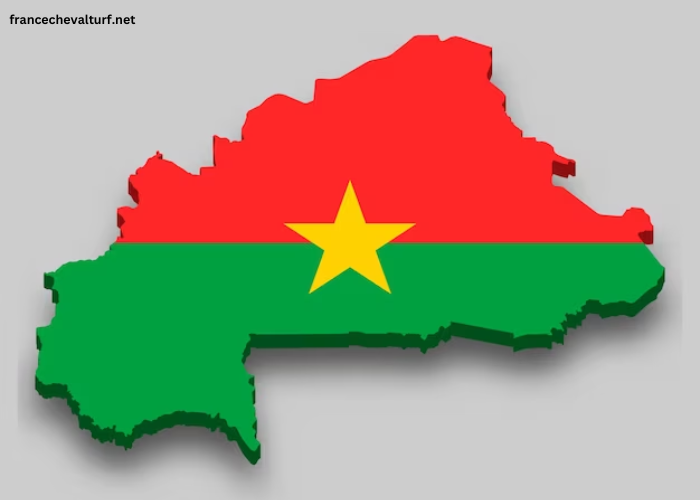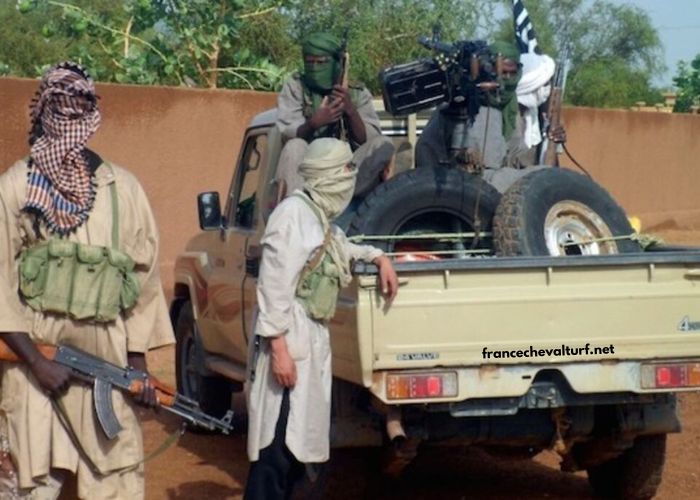Burkina Faso, located in the heart of West Africa, is a landlocked country known for its rich cultural heritage, diverse geography, and vibrant history. The Carte Du Burkina Faso is an essential tool for understanding the topography, administrative divisions, and natural resources of this fascinating country. From the northern desert regions to the fertile plains in the south, the Carte Du Burkina Faso helps both locals and visitors navigate and appreciate the various geographical features that shape the country.
A Carte Du Burkina Faso typically includes details such as the capital city of Ouagadougou, major roads, borders, rivers, and the diverse climate zones found across the country. Whether for travel, education, or research purposes, understanding the layout of Burkina Faso through a detailed map is invaluable. This article will delve into the importance of the Carte Du Burkina Faso, explore the key geographical features, and highlight how this map aids in navigation and understanding the cultural and environmental landscape of Burkina Faso.
What Is the Carte Du Burkina Faso?
The Carte Du Burkina Faso is a detailed map that showcases the geographical, administrative, and cultural layout of the country. It offers a visual representation of the country’s boundaries, regions, cities, and major landmarks. The map is essential for anyone looking to understand the country’s physical geography and its distribution of resources, climate zones, and population centers.
Geographically, Burkina Faso is bordered by six countries: Mali to the northwest, Niger to the east, Benin and Togo to the south, Ghana to the southwest, and Côte d’Ivoire to the west. The Carte Du Burkina Faso highlights these borders along with the intricate network of rivers such as the Comoé River and the Mouhoun River, which play a crucial role in the country’s agriculture and water supply.
The map also outlines the administrative regions of Burkina Faso, which are divided into 13 regions, each with its own unique cultural and natural features. Whether for educational or practical purposes, the Carte Du Burkina Faso provides an in-depth look at the country’s diverse landscapes, infrastructure, and population centers.
How Does the Carte Du Burkina Faso Help in Navigation?
A Carte Du Burkina Faso serves as a critical tool for navigation, whether you are traveling within the country or conducting research. The map provides a clear representation of the major roads, highways, and transportation networks that connect the various regions and cities. This is especially important in a landlocked country like Burkina Faso, where efficient transport infrastructure is essential for economic development and mobility.
Navigating the roads in Burkina Faso can be challenging due to varying terrain and infrastructure development in rural areas. The Carte Du Burkina Faso helps by marking the key transportation routes, making it easier for travelers to plan their trips, locate specific areas, and understand the distance between major cities. For instance, the map clearly marks the path between the capital Ouagadougou and other important cities like Bobo-Dioulasso, Koudougou, and Ouahigouya, making travel more accessible.
In addition to highways, the Carte Du Burkina Faso highlights rivers and waterways that can be used for transportation, especially in the rural regions where road access may be limited. By providing a comprehensive layout of these transport systems, the Carte Du Burkina Faso aids both residents and visitors in navigating the country effectively.
What Are the Main Geographical Features on the Carte Du Burkina Faso?
The Carte Du Burkina Faso features a variety of geographical elements that reflect the country’s diverse landscape. Burkina Faso’s topography is predominantly characterized by flat plains and rolling hills, with some areas featuring savannas and woodlands, while others are dominated by semi-arid conditions. The Carte Du Burkina Faso shows the range of elevations found across the country, from the highlands in the southwest to the lower, flatter plains in the north and east.
In terms of climate, Burkina Faso experiences a tropical climate with distinct wet and dry seasons. The Carte Du Burkina Faso illustrates the different climate zones, ranging from the humid south to the arid north. The fertile south is known for agriculture, while the northern part of the country is more suited to nomadic herding and mining activities. The Carte Du Burkina Faso is a valuable resource for understanding how climate affects the agricultural patterns and lifestyles of the people in each region.
Rivers such as the Comoé and the Mouhoun are marked on the Carte Du Burkina Faso, highlighting their importance to the country’s water supply and agriculture. These waterways are vital for providing irrigation to the country’s farmlands, especially in areas where rainfall is scarce.
How Do the Regions of Burkina Faso Appear on the Carte Du Burkina Faso?
Burkina Faso is divided into 13 administrative regions, each with its own unique cultural, geographical, and economic significance. The Carte Du Burkina Faso outlines these regions and provides insights into how they contribute to the country’s overall functioning. For example, the central region, which includes Ouagadougou, is the political and economic hub of the country, with significant infrastructure, government offices, and commercial activity.
In contrast, regions like the Sahel in the north are more sparsely populated and are primarily known for their arid landscapes and limited agricultural production. The Carte Du Burkina Faso clearly marks these regional divisions, helping to differentiate areas based on geography, population density, and economic activities.
The map also highlights major cities within each region, providing useful information for travelers, businesses, and researchers. Understanding the regional differences through the Carte Du Burkina Faso is crucial for anyone looking to engage with the country’s diverse populations or undertake development projects.
Why Is the Carte Du Burkina Faso Important for Education and Research?
For educational and research purposes, the Carte Du Burkina Faso is an indispensable resource. It offers detailed information on the country’s physical features, climate, and human geography, making it an ideal tool for students, educators, and researchers interested in West African studies, geography, or environmental science.
The map provides a visual aid for understanding Burkina Faso’s historical development, population distribution, and regional disparities. It can be used in classrooms to teach about the country’s geography, as well as in academic research to analyze issues related to land use, environmental conservation, and urban planning.
Additionally, the Carte Du Burkina Faso serves as a valuable tool for NGOs and international organizations involved in development work. It helps identify key regions for intervention, from areas in need of irrigation and water management to regions affected by climate change. For these organizations, having access to a detailed and accurate map is essential for making informed decisions.
How Can Tourists Benefit from the Carte Du Burkina Faso?
Tourists visiting Burkina Faso will find the Carte Du Burkina Faso a useful tool for exploring the country’s cultural and natural attractions. The map not only highlights the major cities but also showcases some of the country’s most famous landmarks, including the Ruins of Loropéni, which is a UNESCO World Heritage site, and the scenic waterfalls in Banfora.
The Carte Du Burkina Faso helps tourists plan their travel itineraries by providing details about roads, accommodations, and points of interest. For those interested in eco-tourism or cultural tourism, the map offers valuable information on regions that are known for wildlife, traditional villages, and natural beauty. Whether exploring the capital or venturing into rural areas, tourists can use the map to better understand the geography and plan their trips more effectively.
Additionally, understanding the diverse geographical zones of Burkina Faso through the Carte Du Burkina Faso can enrich the travel experience by giving visitors insights into the various climates, landscapes, and cultures that exist across the country.
Conclusion
In conclusion, the Carte Du Burkina Faso is an invaluable tool for navigating the country’s diverse geography, administrative regions, and cultural landscapes. From helping with navigation to supporting educational and research initiatives, the map offers a wealth of information for both locals and visitors.
Whether for academic purposes, tourism, or practical navigation, the Carte Du Burkina Faso provides a comprehensive view of the country’s physical and human geography, making it an essential resource for anyone looking to explore or understand this fascinating West African nation.




